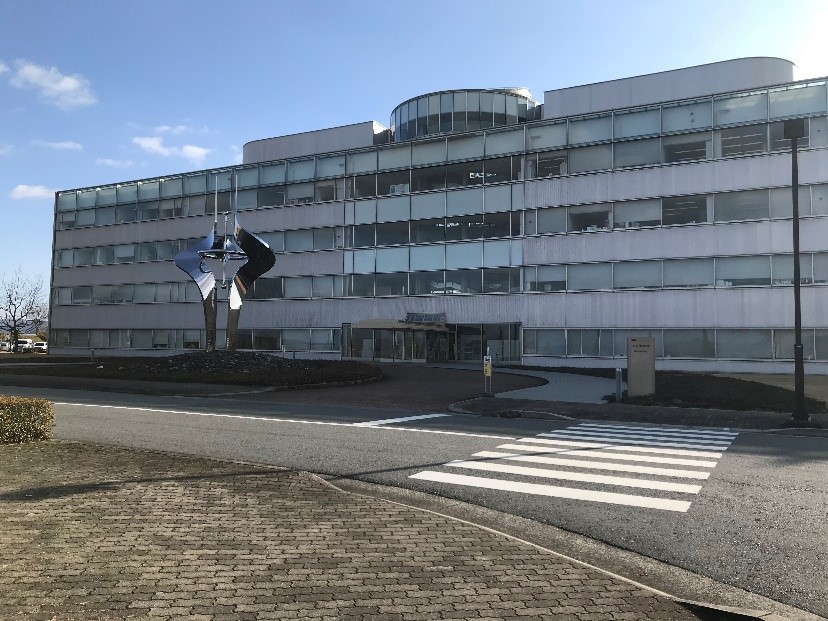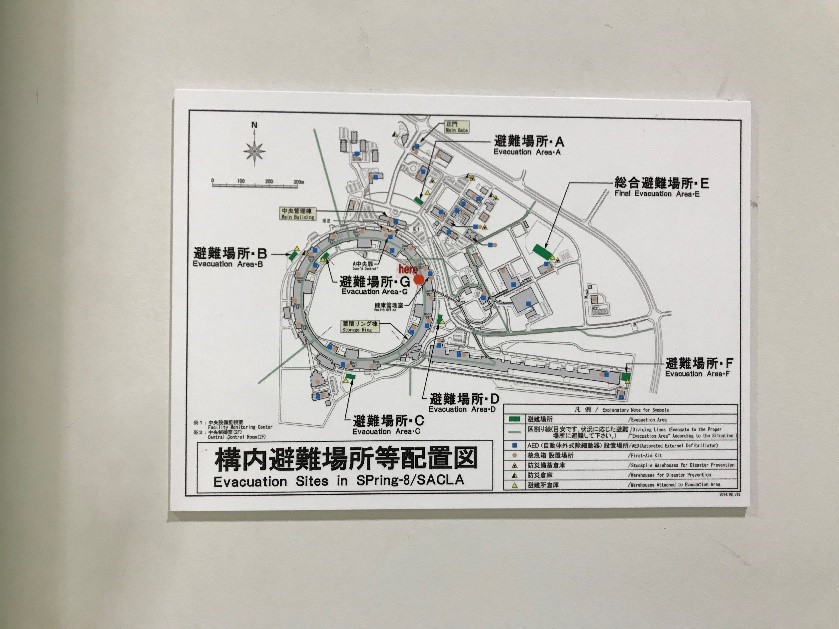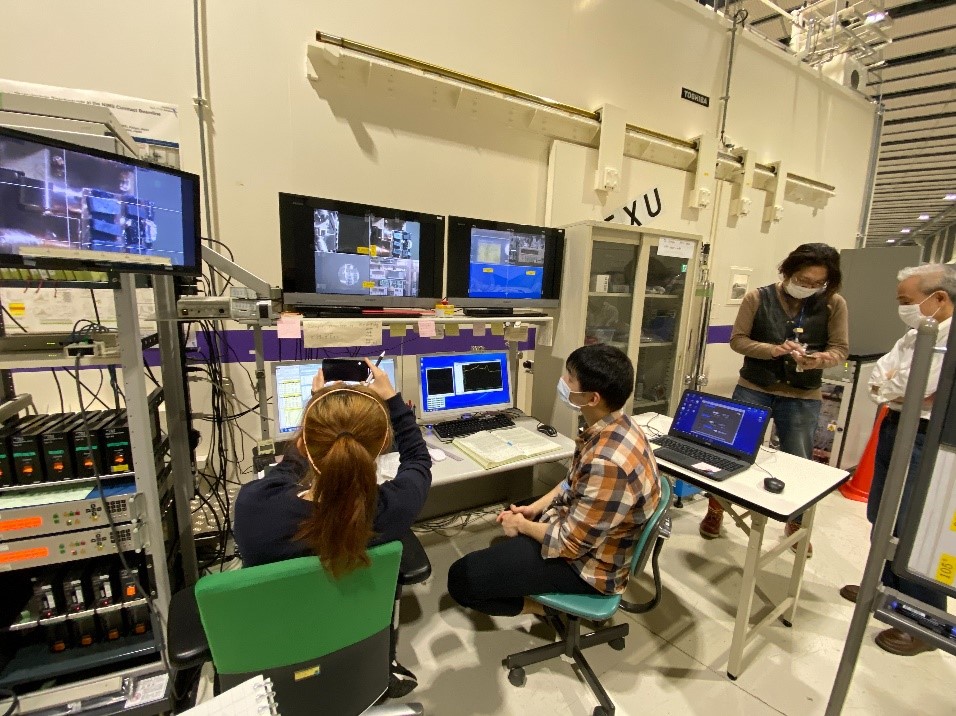Hello, it’s Liu again! Currently I’m a 2nd year student of master’s degree and have spent almost 2 years in Miyauchi lab of Materials Science and Engineering. This time I’ll be sharing my experience of a my visit, as part of my research, to SPring-8, a large synchrotron radiation facility located in Hyogo prefecture.
● Disclaimer:
While your research laboratory might be different from mine, you can have the chance to go visit other research labs and facilities while you are student. However, this situation might apply better to those whose research requires experiments, since some of the instruments are simply too large/expensive for a regular lab to own one.
SPring-8 – The World’s Largest 3rd Generation Synchrotron Radiation Facility
Let me explain a little bit more on the details of SPring-8. The name “SPring-8” is derived from “Super Photon ring-8 GeV” (8 GeV, or 8 giga electron volts, being the energy of electron beam circulating in the storage ring), which happens to be the most powerful synchrotron radiation currently available. In a nutshell, SPring-8 shoots super powerful beams. This is useful in the field of nanotechnology, biotechnology, material science, and many more.
Feel free to check the SPring-8 website if you’re curious about the technical details.
The key figure of this research trip is our joint researcher, Professor Hideki Abe from NIMS (National Institute of Material Science), who also happens to oversee one of the many beamlines of SPring-8. Thanks to him, we could gain access to the massive, top-notch research equipment.
This SPring-8 project has been going on for several years, and every year Prof. Abe invites members of our lab to join the Hard-XPS measurement, a material characterization technique that gives us information of elements and chemical states of our samples.
After receiving the invitation e-mail, 3 members from our lab, including me, joined this research activity. We reserved the synchroton for 48 hours. In these 48 hours, the machine will be operated non-stop, so Professor Abe and the 3 of us will need to take turns to run the measurement.
However, before joining the measurement, we needed quite a bit of preparation; we need to be trained and registered as a radiation worker.
● E-learning and on-campus training
E-learning, or pre-recorded lectures, is a staple of Tokyo Tech when it comes to all kinds of training. I remember doing e-learning related to research ethics when I first entered my current lab.
In the case of being a radiation worker, I must attend around 3 hours of pre-recorded lectures. These lectures covered a good deal of information, including: the basics of particle accelerators, how to deal with radioisotopes, related laws and regulations, etc. Lastly, I had to pass the online comprehension test to finish the e-learning. The good thing is, I could redo the comprehension test until I get a passing score.
The on-campus training took place in a small linear accelerator in Suzukakedai Campus.
There, a technician showed us the room containing the linear accelerator. He then taught us the principle of the related instruments, and most importantly, how to be safe around them. I was amazed at how many safety measures there are in the operation room. We need to scan our user card and take a safety key upon entering the room. As long as the safety key is taken, the accelerator could not operate. Only if every single key is returned, can the machine be powered up. Even if someone did not take the safety key, the gate closes along with an emergency alarm, to warn the operators so that they could press the emergency switch inside the room.
Finally, we also learned and did some measurements with the radioactivity meter. I personally think the training did a good job on letting us be “aware” of radioactive substances, rather than being “afraid” of them.
● Arriving and working at SPring-8
By Shinkansen, we went straight from Shinagawa to Aioi station, the nearest station to the facility. From there, a 20-mins bus ride brought us to this massive ring-shaped building. It is impossible to capture the entire facility in a single photo, but I guess the projection from above can prove my point. It will take more than 30 mins to walk around the ring by foot, so inside the facility there are bicycles for us to navigate through the circle more efficiently. (The bikes are in pretty bad condition though!)


Upon arriving at the facility, we went straight to work: drop casting the samples, and placing the samples into the XPS holder. The following 24 hours, we were told to get a good night’s sleep and even more sleep in the next day. This is to prepare for the upcoming night shift. We were given a decent dorm to rest, but it was super awkward to sleep at daytime intentionally. I remember putting myself to sleep by taking more carbs in a meal than usual but feeling wide awake after 2 hours of light sleep.
Struggling with my biology clock, I arrived at our working station in the middle of the night, with a somewhat clear mind. From there, we were introduced to the Hard-XPS equipment, and also the software we would be using, operated on multiple computers and multiple screens.

The samples are already on queue. We are mainly going to measure samples from ourselves and other lab members. Our job is to decide the optimum counts we want the data to be scanned and summed up, so we could proceed to the next sample efficiently. Also, taking careful notes of each data so that we do not mistake one for another. Most of the time the operation is quite idle, we are just waiting for the current measurement to end, so that we could move on to the next sample. However, we need to be alert and pay attention especially when we enter the numbers in the computer. A mistake related to the beam’s energy values might ruin the entire machine!
We took turns resting, snacking, monitoring the measurements, taking notes of the serial number of each data, again and again… until the 48 hours was over. The best analogy I could think of, is the feel of taking an extra-long flight. The border between daytime and night is totally blurred; your body feels like pulling off an energetic all-nighter, drowsy but exhilarated at the same time.
The last day, we finished our shift in the morning. We were too tired to do anything else so we hopped on the Shinkansen and went straight back to Tokyo. Though exhausted, this trip was surely a unique and fruitful experience. I do hope the XPS data we collected will be useful in future papers.
There you go, that was my experience in going on a research trip to a research facility, 600 kilometers away from Tokyo Tech. Peace!
